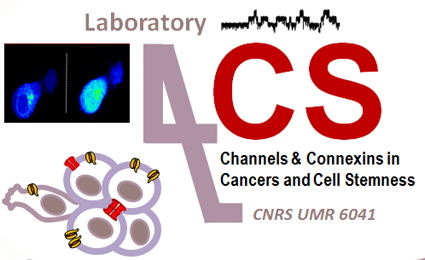Connexins and Pannexins: Important Players in Tumorigenesis, Metastasis and Potential Therapeutics
Résumé
Since their characterization more than five decades ago, gap junctions and their structuralproteins—the connexins—have been associated with cancer cell growth. During that period,the accumulation of data and molecular knowledge about this association revealed an apparentcontradictory relationship between them and cancer. It appeared that if gap junctions or connexinscan down regulate cancer cell growth they can be also implied in the migration, invasion andmetastatic dissemination of cancer cells. Interestingly, in all these situations, connexins seem to beinvolved through various mechanisms in which they can act either as gap-junctional intercellularcommunication mediators, modulators of signalling pathways through their interactome, or ashemichannels, which mediate autocrine/paracrine communication. This complex involvement ofconnexins in cancer progression is even more complicated by the fact that their hemichannel functionmay overlap with other gap junction-related proteins, the pannexins. Despite this complexity, thepossible involvements of connexins and pannexins in cancer progression and the elucidation of themechanisms they control may lead to use them as new targets to control cancer progression. In thisreview, the involvements of connexins and pannexins in these different topics (cancer cell growth,invasion/metastasis process, possible cancer therapeutic targets) are discussed.
Domaines
Sciences du Vivant [q-bio]| Origine | Publication financée par une institution |
|---|

